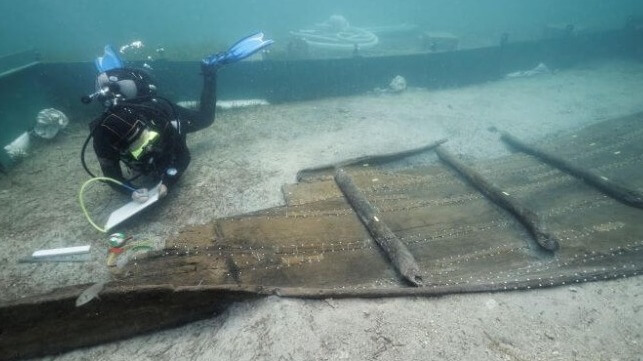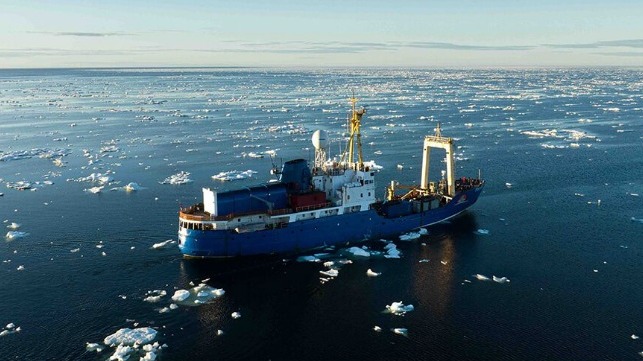Archaeologists Plan to Raise Ancient Hand-Sewn Vessel off Croatia

Marine archaeologists are preparing to raise a hand sewn boat dating back over 3,200 years from the bottom of the Mediterranean Sea, off the coast of Croatia. Raising the vessel will allow for extensive studies of the incredibly well-preserved wreck.
During the first week of July, a team of French and Croatian researchers intend to recover the wreck of the Zambratija boat, a vessel type that is believed to have defined regional shipbuilding between the 12th and 10th centuries BC. The boat, which is the oldest entirely hand-sewn boat ever found in the Mediterranean, has withstood the test of time: seven meters of its original 12-meter length are still remarkably well preserved. It represents a rare example of the ancient shipbuilding tradition of Istria and Dalmatia, two regions on the Croatian coast.
The French National Center for Scientific Research (CNRS) will be undertaking the project in collaboration with the Archaeological Museum of Istria in Pula, Croatia. The task is bound to be delicate, since the boat is made from pieces of wood that were intricately sewn together using flexible fibers.
Archaeologists believe that sewn boat construction techniques were used in many parts of the world prior to the development of metal fasteners. They continued to be used long after that time for small boats to reduce construction costs. Carefully shaped planks are connected at the edges with overlapping sections, which are sewn together. Scientists have marveled due the sewing technique employed for the assemblage of the planking and the related water tightness, which they describe as unparalleled.
The remains of the boat found are incredibly well-preserved for its age, with stitching still visible in some areas and the frame largely undamaged. Pulling the boat out of the water will enable researchers carry out detailed analysis using modern day technologies, including 3D reconstruction.
CNRS said that once the pieces have been removed and placed in a custom support, the scientists will reconstruct the boat in 3D. This will enable them identify the fibers used for sewing and study the techniques used to shape the wood.
“Handling relics of this caliber is a delicate affair; therefore, every stage of the process will require the utmost care,” said CNRS. Once the analysis is completed, the exceptional vessel and its components will be desalted in Croatia before being taken to Grenoble in 2024, where it will be preserved by the Arc-Nucléart restoration workshop. The ultimate plan is to have the fully-restored boat exhibited in a new maritime heritage museum in Pula, Croatia.



